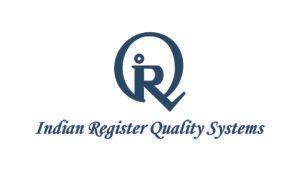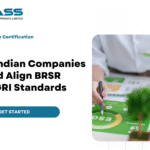Step-by-Step Guide to BRCGS Certification for Food Businesses
May 23, 2025 2025-05-30 12:34Step-by-Step Guide to BRCGS Certification for Food Businesses
Now that food safety is important both to the law and to customers, businesses in food production must demonstrate their care for quality and hygiene. If you are in the food industry as a manufacturer, processor, packer or distributor, getting a globally accepted certification can increase your reputation and help you access new markets.
The BRCGS (Brand Reputation through Compliance Global Standards) certification is a highly respected food safety standard around the globe. Many retailers, manufacturers and food service companies around the world rely on BRCGS certification to manage food safety, quality and comply with laws. What is required to achieve BRCGS certification?
This guide explains all the necessary steps, starting with learning about the standard and ending with keeping your business compliant over time.
What Is BRCGS Certification?
BRCGS is short for Brand Reputation Compliance Global Standards. Originally developed by BRC, it is now a respected brand that establishes strict rules for food safety, packaging, storage, and consumer items around the world. Food manufacturers and processors use the BRCGS Food Safety Standard, which is approved by the GFSI and recognized globally.
With certification, food businesses can handle safety, integrity, legality, and quality using an official framework. Besides the badge, it gives retailers, suppliers, and consumers the confidence that your products are the best in the industry.
What You Need to Know
Getting BRCGS certification gives a business an advantage in the international food market. Retailers and supermarkets may require you to have it. With certification, your internal operations are improved, your team becomes more aware, products are easier to track, and the risk of recalls or legal problems is lowered.
Because a single food safety scandal can destroy a brand, having an effective and approved food safety system is now vital.
The first step is to learn about the BRCGS Food Safety Standard
First, download the latest edition of the BRCGS Global Standard for Food Safety. Read through it carefully to understand what your business will be judged on. The standard is based on various parts, including top management support, HACCP, food safety and quality systems, and good manufacturing practices (GMPs).
It is necessary for leadership and quality teams to align with everything the standard sets out—from how documents are handled to how production is managed.
Step 2: Perform a Gap Analysis
After that, you should conduct a detailed gap analysis. Comparing your current system to the BRCGS requirements is part of this process. A gap analysis points out any issues, non-conformities, or missing processes that may affect your chances of being certified.
For every gap, document it and establish a clear plan to fix it. This allows you to start making improvements in your system.
Step 3: Develop or Improve Your Processes for Food Safety
As soon as areas for improvement are found, update or create your Food Safety Management System (FSMS) to fulfill BRCGS requirements. These policies, procedures, records, and manuals should be based on the standard.
Key elements usually include:
- Hazard and risk assessments (HACCP)
- Checking and approving suppliers and monitoring their progress
- The ability to trace products and recall them when needed
- Cleaning schedules
- Methods for controlling pests
- Ways to test products
Your FSMS needs to be carefully organized, recorded, and implemented in daily operations—not just written down.
Step 4: Inform and Train Your Workforce
Your certification relies on the success of the people you work with. All staff members involved in production, quality assurance, warehousing, and management should be trained on the BRCGS standard and your FSMS. Topics covered in training might include food hygiene, personal hygiene, cross-contamination, cleaning procedures, and the company’s reporting system.
It is important to set up training regularly to cover new risks, updates to processes, or changes in the standard.
Step 5: Carry Out Internal Audits
Conduct internal audits in all departments before the official audit takes place. This gives you a chance to identify areas for improvement and simulate the real audit experience.
Review your documentation, observe operations, interview employees, and document findings. Any non-conformities should be investigated and corrected with proper action plans.

Step 6: Pick a Certification Body
Now it’s time to select a certification body that is BRCGS-accredited. You need to find one with expertise in your sector and the ability to interpret the standard as it applies to your company.
Collaborate with your chosen body to set the audit date, assess your readiness, and determine required documentation.
Step 7: Plan and Set Up the Certification Audit
Most often, your first audit is an announced audit. All parts of your food safety system will be assessed during the audit, including:
- Document reviews
- Facility inspections
- Employee interviews
- Process observations
All clauses in the BRCGS standard will be reviewed by the auditor. The results determine your grade—AA, A, B, or C. A higher grade increases credibility and can influence how often audits are required.
Step 8: Address Any Non-Conformities
Should non-conformities be found during the audit, don’t panic. You’ll have the opportunity to respond. Submit corrective action plans and supporting evidence within the defined period (usually 28 days).
Once your application is approved, your certification will be granted.
Step 9: Share Your Certification
After receiving your BRCGS certificate, it’s important to share the news. Include the certification in your marketing materials, inform your clients, and update your website. For many retailers and distributors, this certification is a prerequisite to doing business.
Step 10: Maintain and Improve
Achieving BRCGS certification means committing to continuous improvement. To ensure ongoing compliance:
- Conduct regular internal audits
- Provide continuous training for employees
- Stay current with regulatory updates
- Be prepared for potential unannounced audits
- Hold regular management reviews to evaluate performance and plan improvements
By consistently improving, your business remains compliant, resilient, and ready for growth.
Step 11: Recertify Your System
Your BRCGS certification is typically valid for 12 months. A recertification audit is required before it expires. This process verifies that your organization maintains consistency and demonstrates ongoing improvement.
Depending on your previous performance and risk level, recertification audits may be unannounced. You should always keep your food safety systems audit-ready.
Usual Problems and How to Solve Them
Some businesses face challenges like staff turnover, missing documentation, or lack of leadership involvement. These can jeopardize your certification efforts. The key to overcoming them lies in:
- Strong leadership
- Clear communication
- Empowered employees
- Choosing the right partners
Avoid shortcuts—they may lead to failed audits, financial losses, and damaged reputations.
In Conclusion
Gaining BRCGS certification is not only about following rules—it’s about enhancing your business. It ensures your food is safe, builds customer trust, and positions your company for success in a demanding global market.
Certification is not easy. It requires planning, structure, consistency, and expert guidance. That’s why selecting the right certification partner is essential.
IRQS is the trusted choice for organizations pursuing BRCGS certification. With decades of experience and global connections, IRQS supports food businesses from assessment to certification and beyond. If you want to strengthen your food safety capabilities, IRQS is here to support you.






